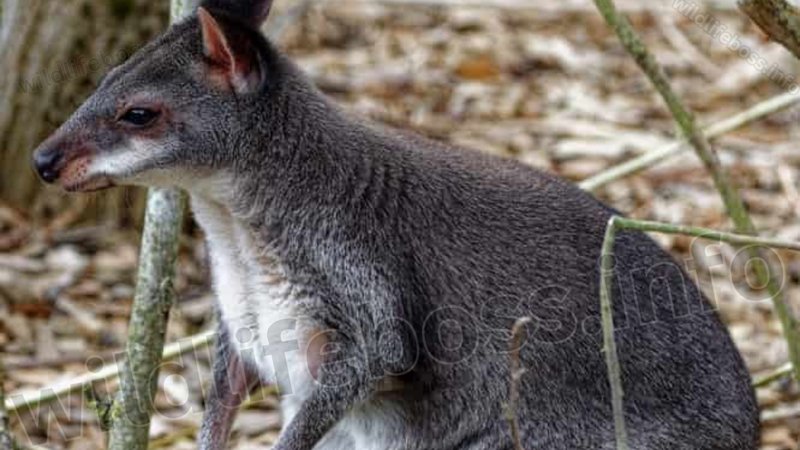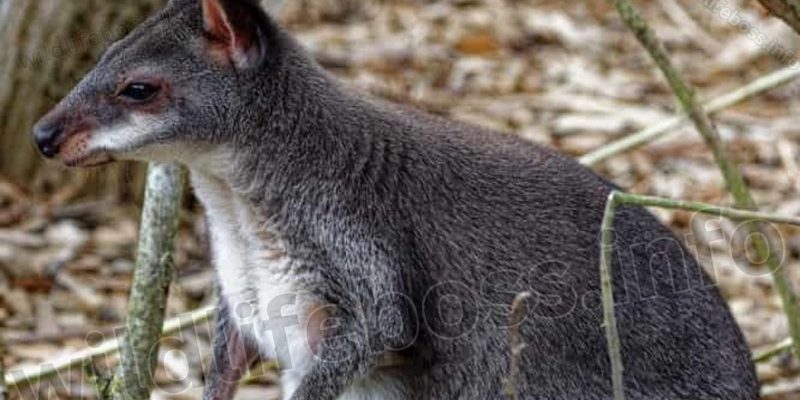
Understanding these animals isn’t just about recognizing their physical traits; it’s also about appreciating their unique behaviors and habitats. Think of it like having a diverse group of friends—each one brings something special to the table. So, grab your coffee, and let’s hop into the world of kangaroo lookalikes!
1. Eastern Grey Kangaroo
The Eastern Grey Kangaroo is one of the most recognizable animals in Australia, right alongside its Western cousin. They both belong to the same genus, *Macropus*, which means they share quite a few similarities in appearance. Usually, the Eastern Grey has a slightly lighter fur color and a more slender build compared to the Western Grey, which can be stockier.
You can find Eastern Greys in a variety of habitats, from grasslands to forests. They’re social animals and tend to gather in large mobs. If you ever see a group of them, you might notice their playful interactions, which can be quite a sight! Here’s a key difference to remember: the Eastern Grey tends to have longer and more pointed ears, which sets it apart from the Western Grey.
2. Agile Wallaby
Next up is the Agile Wallaby, another kangaroo relative that’s a bit smaller and more agile than the Western Grey. Just as the name suggests, these wallabies are known for their exceptional jumping abilities and are often found in coastal scrub or grassy areas.
While they share a similar body shape, Agile Wallabies have shorter legs and a thicker tail, which helps them balance while leaping. They also have a distinctive marking on their face—a dark stripe running down to their nose. If you spot a wallaby that’s zipping around like it’s in a game of hopscotch, chances are it’s an Agile Wallaby!
3. Black Wallaby
The Black Wallaby, or *Wallabia bicolor*, is another contender in the kangaroo lookalike category. With its dark fur and contrasting lighter patches, this wallaby can easily catch your eye. They are typically smaller than both the Western and Eastern Grey Kangaroos.
Black Wallabies are often found in forested areas, making them a bit more secretive. Unlike the Western Grey, which can be quite social, Black Wallabies tend to be more solitary or seen in smaller groups. If you see a wallaby lurking in the shadows of a tree line, you’re likely observing a Black Wallaby!
4. Swamp Wallaby
Here’s one more wallaby to consider—the Swamp Wallaby. This little guy is known for its distinctive appearance, with a stockier build and a robust tail. They prefer wet, swampy areas, which is where they get their name.
One of the main differences between the Swamp Wallaby and the Western Grey is its color. Swamp Wallabies are typically darker, sometimes appearing almost black, with a reddish-brown underbelly. Plus, they have a shorter snout and a more rounded face. If you spot one hopping around near water, you’ve found a Swamp Wallaby!
5. Bennett’s Wallaby
The Bennett’s Wallaby, also known as the Red-necked Wallaby, is another relative worth mentioning. They’re a bit larger than the other wallabies and have a more robust build, similar to the Western Grey. However, Bennett’s have a distinctly reddish-brown neck, which helps differentiate them.
These animals are commonly found in open grasslands and forests. They tend to be more social than some of the smaller wallabies, often seen in groups. If you’re lucky enough to see a few together, look for that unique neck coloration, and you’ll know you’re looking at Bennett’s Wallabies!
6. Wallaroo
Meet the Wallaroo, a close cousin to the kangaroo. They may be less well-known, but they definitely share some traits. Wallaroos are stockier and have a more muscular build than Western Greys, as they’ve adapted to rocky and hilly terrains.
The key to identifying a Wallaroo is the coloring and size. They often have a mix of brown and grey fur, and their ears are shorter than those of kangaroos. If you see a robust “kangaroo” on rugged land, take a closer look; it might just be a Wallaroo!
7. Tammar Wallaby
The Tammar Wallaby is a smaller species that you might come across in Tasmania and some parts of Australia. These wallabies have a compact body, which distinguishes them from their larger kangaroo relatives. They have a more rounded face and shorter limbs.
You’ll usually find them in dense bushland or near coastal areas. While they may look similar to the Western Grey at a glance, their size and shorter stature tell a different story. If you ever spot a smallish, bushy-tailed creature nibbling on grass, chances are it’s a Tammar Wallaby.
8. Red Kangaroo
The Red Kangaroo is the largest of the kangaroo species, and while they share some similarities with the Western Grey, their size and color make them stand out. As their name suggests, Red Kangaroos often have a reddish-brown coat, while the Western Grey leans towards a greyish hue.
They’re usually found in open arid regions, and their powerful legs are built for covering long distances. The Red Kangaroo is more solitary compared to the Western Grey, which tends to socialize in groups. Keep an eye out for their distinct hopping style that seems almost effortless!
9. Padmelon
The Padmelon is a small marsupial that may not resemble the Western Grey kangaroo at first glance, but they do share some characteristics. They have a stocky body, short legs, and a similar hopping gait, which is why they’re often grouped with wallabies.
These little creatures prefer dense undergrowth and are more elusive than their larger counterparts. If you see a short, compact animal moving quickly through thick brush, there’s a good chance it’s a Padmelon!
10. Quokka
Finally, let’s talk about the Quokka, often dubbed the “world’s happiest animal.” While they’re much smaller than a Western Grey Kangaroo, Quokkas have a similar body shape with a round face, making them adorable.
These little guys mainly reside on Rottnest Island, where their friendly demeanor has made them popular with tourists. You probably won’t mistake a Quokka for a kangaroo, but they do share the same family, making them a fun addition to our list!
In conclusion, the animal kingdom is full of fascinating creatures that resemble the Western Grey Kangaroo in one way or another. Each has its own unique twists that make them special. Next time you encounter one of these animals, you can impress your friends with your newfound knowledge on how to tell them apart. Whether it’s the social Eastern Grey or the elusive Padmelon, there’s always something new to discover about Australia’s wildlife!

